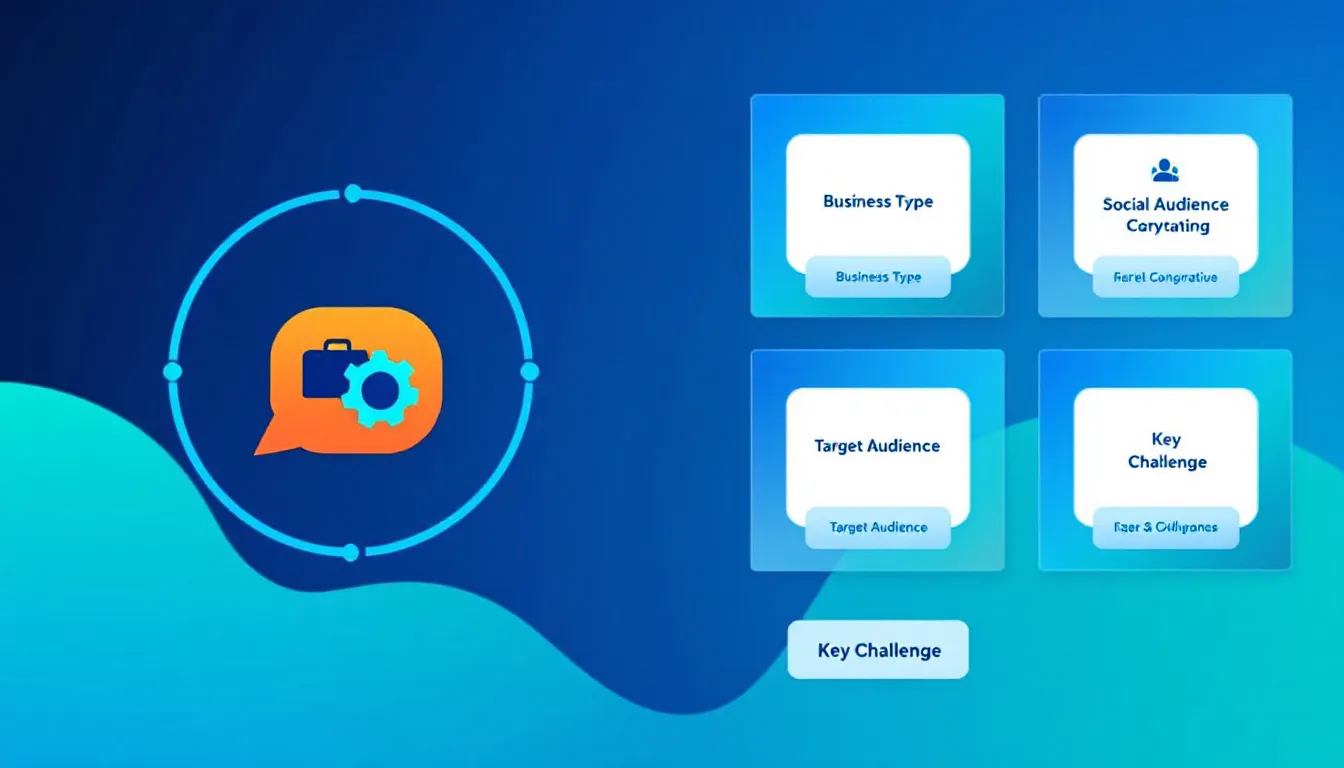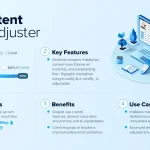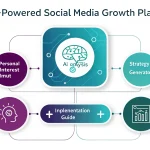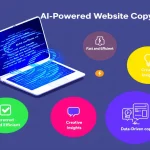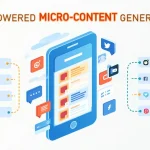Is this tool helpful?
How to Use the Social Media Content Strategy Generator
This powerful social media strategy tool helps create customized content plans in just a few simple steps:
- Business Type: Enter your specific business category. Example inputs: “Boutique fitness studio specializing in HIIT workouts” or “Handcrafted jewelry business focusing on personalized pieces”
- Target Audience: Detail your ideal customer profile. For instance: “Active women aged 30-45 who value work-life balance and personal wellness” or “Corporate professionals aged 28-40 seeking meaningful gifting options”
- Key Challenges: Outline the primary obstacles your audience faces. Examples: “Finding time for consistent workout routines while managing family responsibilities” or “Discovering unique, personalized jewelry pieces within a moderate budget”
- Content Goals: Define your strategic objectives (optional)
- Preferred Platforms: List your target social media channels (optional)
- Brand Voice: Describe your ideal communication style (optional)
Understanding the Social Media Content Strategy Generator
This innovative tool transforms your business inputs into a comprehensive social media content strategy that resonates with your target audience and addresses their specific pain points. By analyzing your business type, audience characteristics, and key challenges, it generates tailored content recommendations that drive engagement and achieve your marketing objectives.
Core Components of the Strategy Generator
- Audience-centric content mapping
- Platform-specific recommendations
- Challenge-solution content frameworks
- Engagement optimization suggestions
- Content diversity recommendations
Benefits of Using the Social Media Strategy Generator
1. Time and Resource Optimization
Instead of spending weeks developing a content strategy manually, this tool creates a structured plan within minutes, allowing you to focus on implementation and refinement.
2. Data-Driven Approach
The generator incorporates proven social media engagement patterns and content effectiveness metrics to ensure your strategy is built on solid foundations.
3. Customized Solutions
Unlike generic social media templates, this tool creates personalized recommendations based on your specific business context and audience needs.
4. Strategic Alignment
The generated strategy ensures all content elements align with your business objectives and target audience expectations.
Problem-Solving Capabilities
Addressing Content Planning Challenges
The tool tackles common content strategy hurdles:
- Content consistency and frequency
- Audience engagement optimization
- Platform-specific content adaptation
- Message clarity and brand voice consistency
- Content diversity and innovation
Strategic Framework Development
The generator creates a structured approach to content planning by:
- Identifying key content themes
- Suggesting content formats
- Recommending posting schedules
- Outlining engagement strategies
Practical Applications and Use Cases
Case Study 1: Local Artisanal Coffee Shop
Input Parameters:
- Business Type: Specialty coffee roastery and café
- Target Audience: Urban coffee enthusiasts, 25-40, interested in sustainable practices
- Key Challenges: Education about specialty coffee, price justification
Generated Strategy Highlights:
- Behind-the-scenes content showing roasting process
- Educational posts about coffee origins and brewing methods
- Customer story features highlighting coffee journey
- Sustainability impact content
Case Study 2: Online Fitness Coach
Input Parameters:
- Business Type: Virtual personal training services
- Target Audience: Busy professionals, 30-50, seeking convenient workout solutions
- Key Challenges: Time management, motivation maintenance
Generated Strategy Highlights:
- Quick workout snippets
- Client transformation stories
- Time-management tips
- Motivation Monday content series
Frequently Asked Questions
Q: How detailed should my target audience description be?
The more specific your target audience description, the more tailored your content strategy will be. Include demographics, interests, behaviors, and preferences.
Q: Can I generate multiple strategies for different audience segments?
Yes, you can create separate strategies for different audience segments by running the generator multiple times with different parameters.
Q: How should I implement the generated strategy?
Start by reviewing the complete strategy, then create a content calendar based on the recommendations. Implement gradually, measuring engagement and adjusting as needed.
Q: Should I include all suggested platforms in my strategy?
Focus on platforms where your target audience is most active. Quality engagement on fewer platforms is better than scattered presence across many.
Q: How often should I update my content strategy?
Review and refresh your strategy quarterly, or whenever significant changes occur in your business or target audience.
Q: Can I customize the generated strategy?
Yes, the generated strategy serves as a foundation that you can modify based on your specific needs and market response.
Best Practices for Strategy Implementation
1. Content Planning
- Create a content calendar based on generated recommendations
- Batch create content to maintain consistency
- Align content themes with business goals
- Incorporate seasonal and trending topics
2. Engagement Optimization
- Monitor post performance across platforms
- Engage with audience comments and messages
- Adjust posting times based on audience activity
- Test different content formats and themes
3. Brand Consistency
- Maintain consistent visual elements
- Use consistent brand voice across posts
- Align content with brand values
- Create platform-specific content guidelines
4. Performance Tracking
- Monitor key performance indicators
- Track engagement rates
- Analyze audience growth
- Measure content effectiveness
Important Disclaimer
The calculations, results, and content provided by our tools are not guaranteed to be accurate, complete, or reliable. Users are responsible for verifying and interpreting the results. Our content and tools may contain errors, biases, or inconsistencies. We reserve the right to save inputs and outputs from our tools for the purposes of error debugging, bias identification, and performance improvement. External companies providing AI models used in our tools may also save and process data in accordance with their own policies. By using our tools, you consent to this data collection and processing. We reserve the right to limit the usage of our tools based on current usability factors. By using our tools, you acknowledge that you have read, understood, and agreed to this disclaimer. You accept the inherent risks and limitations associated with the use of our tools and services.
